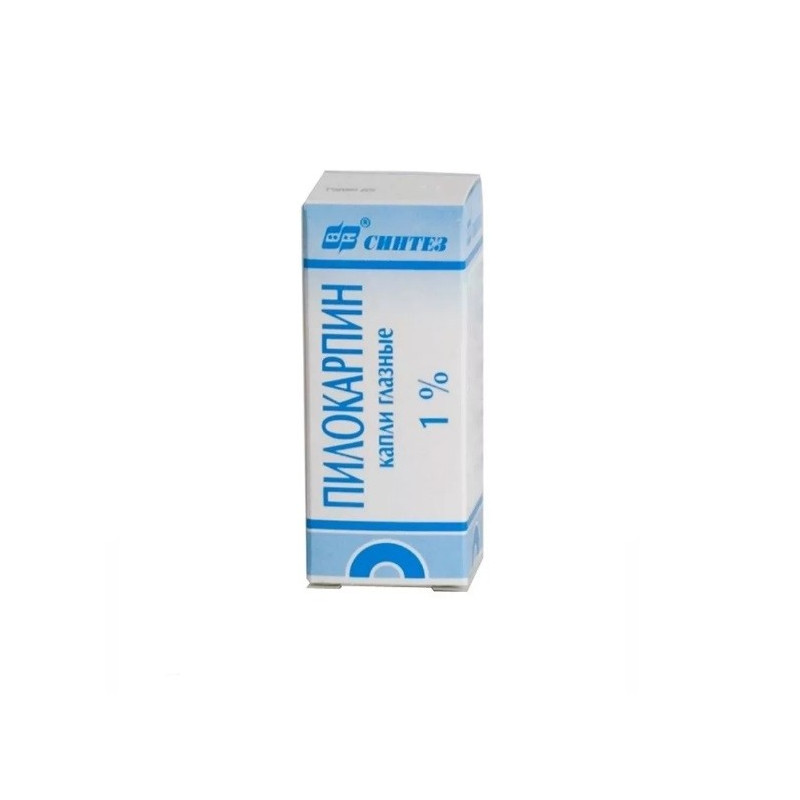



 All payments are encrypted via SSL
All payments are encrypted via SSL
 Full Refund if you haven't received your order
Full Refund if you haven't received your order
Pilocarpine stimulates peripheral m-cholinergic receptors and causes pupil constriction, which opens up the anterior chamber angle (the iris root is delayed), increases the tone of the iris and ciliary body, causing the trabecula to stretch and the Schlemm's canal to open. Due to the opening of the anterior chamber angle and an increase in the permeability of the trabecular diaphragm, the intraocular pressure decreases. The effect of pilocarpine on the level of intraocular pressure continues for 4-6 hours.
For use in ophthalmology: acute glaucoma, secondary glaucoma (thrombosis of the central retinal vein, acute obstruction of the retinal arteries, atrophy of the optic nerve, pigmentary degeneration of the retina), chronic open-angle glaucoma, corneal abscess. The need for constriction of the pupil after instillation of mydriatics.
Eye diseases and conditions in which miosis is undesirable (including after surgery on the eye), iritis, iridocyclitis, hypersensitivity to pilocarpine.
Perhaps the use of pilocarpine for the treatment of children, pregnant women and nursing mothers as directed by the attending physician, if the expected therapeutic effect exceeds the risk of possible side effects.
Instill in the conjunctival sac 1 drop 1-3 times a day. The number of instillations may vary depending on the indications and individual sensitivity of the patient. For the treatment of acute angle-closure glaucoma, pilocarpine solution is instilled within 15 minutes every 15 minutes, 2-3 hours every 30 minutes, 4-6 hours every 60 minutes and then 3-6 times a day until the attack is relieved.
Headache (in the temporal and periorbital areas), pain in the eye area, myopia; reduced vision, especially in the dark, due to the development of persistent miosis and spasm of accommodation; lacrimation, rhinorrhea, superficial keratitis; allergic reactions.
With prolonged use may develop follicular conjunctivitis, contact dermatitis of the eyelids.
In the presence of an initial cataract, the miotic effect may cause transient visual impairment (feeling of myopia), therefore, during the treatment period, care must be taken when driving vehicles and practicing other potentially dangerous activities that require increased concentration and psychomotor reactions.
Antagonists of pilocarpine hydrochloride are atropine and other m-anticholinergic agents. With simultaneous use with adrenostimulyatory can be observed antagonism of action (on the diameter of the pupil).
Timolol and mezaton increase the reduction of intraocular pressure, reducing the production of intraocular fluid.
Perhaps the use of pilocarpine in combination with sympathomimetics, beta-blockers, carbonic anhydrase inhibitors.
M-cholino-stimulating activity of pilocarpine is reduced by tricyclic antidepressants, phenothiazide derivatives, chlorprotixene, clozapine; intensified - anticholinesterase drugs.
Perhaps the development of bradycardia and lowering blood pressure during general anesthesia with the use of ftorotana (in patients using pilocarpine in eye drops).
At temperatures not above 25 ° C.
